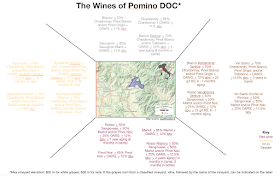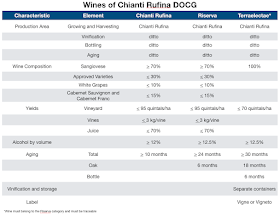Colli Tortonesi Timorasso will be "the next big thing" to emerge from Piemonte and it owes its current position and future potential to the pioneering work of Walter Massa. Massa was not only interested in Timorasso for his own account: "He began to proselytize as regards the variety to anyone who would listen." Daniele Ricci worked as his understudy and acolyte and learned everything that he could before going off and leveraging that knowledge into his own enterprise. I explore Ricci and his wines in this post.
The Backstory
The Ricci Timorasso story goes back to 1929 when the grandparents of Daniele Ricci (Carlo and Clementina) bought Cascina San Leto, land ensconced within an amphitheater of vineyards close to the center of Costa Vescovato. The new owners planted vineyards (6 to 7 ha) and wheat and embarked on cattle-rearing.
During Carlo's stewardship, Timorasso production in Colli Tortonesi declined as farmers shifted to Cortese (more productive) or left farming completely. Carlo, however, bucked both these trends, remaining faithful to the vine and passing it down to successive generations. This was a part of the patrimony when Daniele took control of the estate as a 3rd-generation farmer after a stint as a toll collector on the Italian highway system.
The original Costa Vescovato estate currently sits at 15 ha, 11 of which are planted to vines and 6.5 ha of which are dedicated to named vineyards. In addition to the vines, the estate is planted to small quantities of ancient grains, an orchard, and a vegetable garden. The farmhouse is also resident on this property.
Daniele and his son Mattia secured 8 ha of land in Carezzano in 2022 and immediately planted 1 ha to Timorasso.
The chart below shows the Ricci holdings in the two Colli Tortonesi communes. Named vineyards are described in colored rectangles.
Formation and Evolution of the Ricci Wine-View
Ricci worked as Mazda’s understudy before going off and planting the 1.5 ha Vigna di Carlo at Cascina San Leto. Walter went on to mentor a large number of the small farmers in the region and they, in turn, formed an association organized around his production principles. They met regularly to compare notes and taste each others wines.
Massa’s principles, at that time, were as follows:
- Hand harvesting
- Maceration on the skins
- Soft pressing
- Fermentation with indigenous yeasts in stainless steel tanks
- Spontaneous malolactic fermentation after temperatures reduced to 10 - 18 degrees C
- Wine aged for 1 year in stainless steel tanks (with batonnage)
- Light filtration prior to bottling
- Minimum 6 months bottle aging.
Given his early association with Walter, it is more likely than not that Ricci adhered to these principles early in his winemaking career.
The Colli Tortonesi formula was a key element in Timorasso’s success. The success, in turn, led to (i) new market entrants and (ii) some of the disciples changing the formula and profile of the Timorasso wine in order to place their own stamp on the market. Daniele Ricci was one of these change agents.
Daniele has great respect for the vine and life and sought to “produce varietal wines that are representative of tradition and terroir while working as naturally as possible in both the vineyard and the cellar.” This is manifested in the vineyard by organic farming. He practiced organic farming beginning in 1999 and became certified (Suole e salute) in 2017. But it is in the cellar that Ricci has shown the widest divergence (the disrupting bit) from the traditional recipe with practices such as:
- Long maceration on skins
- Exclusive use of indigenous yeasts
- Refining in underground amphorae
- No filtration
- No fining
- Minuscule sulfur.
Daniele Ricci crafts Timorasso wines from calcareous clay marl vineyards planted in 1986, 1989, 1992, and 1996. His traditional production method is fermentation in stainless steel followed by elevage in stainless steel or untreated oak or acacia barrels. In the case of his Io Camino Da Solo wine, however, the grapes are macerated for 100 days in amphora before transfer to untoasted oak barrels for 12 months aging.
Ricci’s application of these techniques are explicated in his wine portfolio as captured in the chart below.
In addition to the wines shown above, Ricci also makes two sparkling wines dedicated to his Grandmother Clementina. The first is a classic method sparkling wine from 100% Timorasso grapes. It is zero dosage and aged 36 months on the lees. The base wine is a blend of wine macerated for 90 days on skins and wine fermented and aged in acacia barrels in effect a blend of Giallo di Costa and San Leto). The second sparkling wine is a Rosé which has all the characteristics of the wine above except that 5% Barbera is added to the blend and the wine is aged for 24 months on the lees.
I tasted a 2019 vintage of the Derthona recently.
Beautiful brown-orange color attesting to the 3-day skin contact. Derthona nose. Sage and herbs ascendant. Elegant. Wax, spice, peach, lychee, and sago porridge also detected on the nose. Bright acidity with orange-tangerine, drying metal and pepper spice on the palate. Medium weight. Balanced.

















































